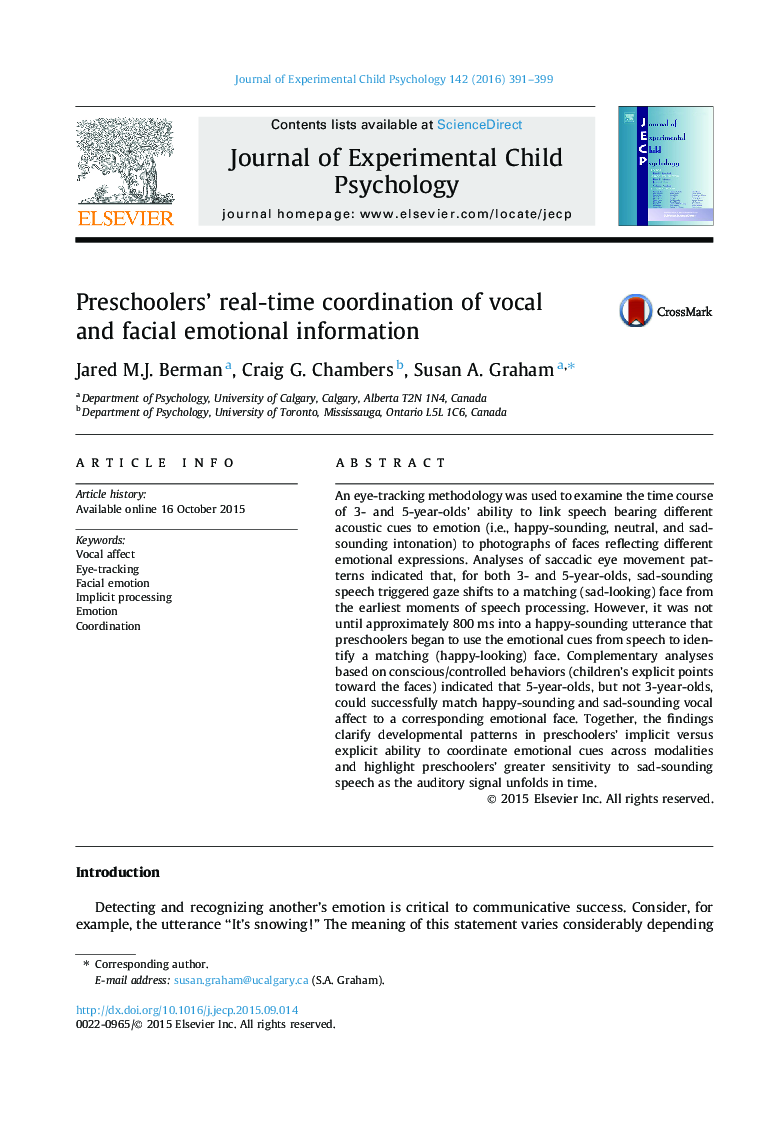| Article ID | Journal | Published Year | Pages | File Type |
|---|---|---|---|---|
| 7274974 | Journal of Experimental Child Psychology | 2016 | 9 Pages |
Abstract
An eye-tracking methodology was used to examine the time course of 3- and 5-year-olds' ability to link speech bearing different acoustic cues to emotion (i.e., happy-sounding, neutral, and sad-sounding intonation) to photographs of faces reflecting different emotional expressions. Analyses of saccadic eye movement patterns indicated that, for both 3- and 5-year-olds, sad-sounding speech triggered gaze shifts to a matching (sad-looking) face from the earliest moments of speech processing. However, it was not until approximately 800Â ms into a happy-sounding utterance that preschoolers began to use the emotional cues from speech to identify a matching (happy-looking) face. Complementary analyses based on conscious/controlled behaviors (children's explicit points toward the faces) indicated that 5-year-olds, but not 3-year-olds, could successfully match happy-sounding and sad-sounding vocal affect to a corresponding emotional face. Together, the findings clarify developmental patterns in preschoolers' implicit versus explicit ability to coordinate emotional cues across modalities and highlight preschoolers' greater sensitivity to sad-sounding speech as the auditory signal unfolds in time.
Related Topics
Social Sciences and Humanities
Psychology
Developmental and Educational Psychology
Authors
Jared M.J. Berman, Craig G. Chambers, Susan A. Graham,
